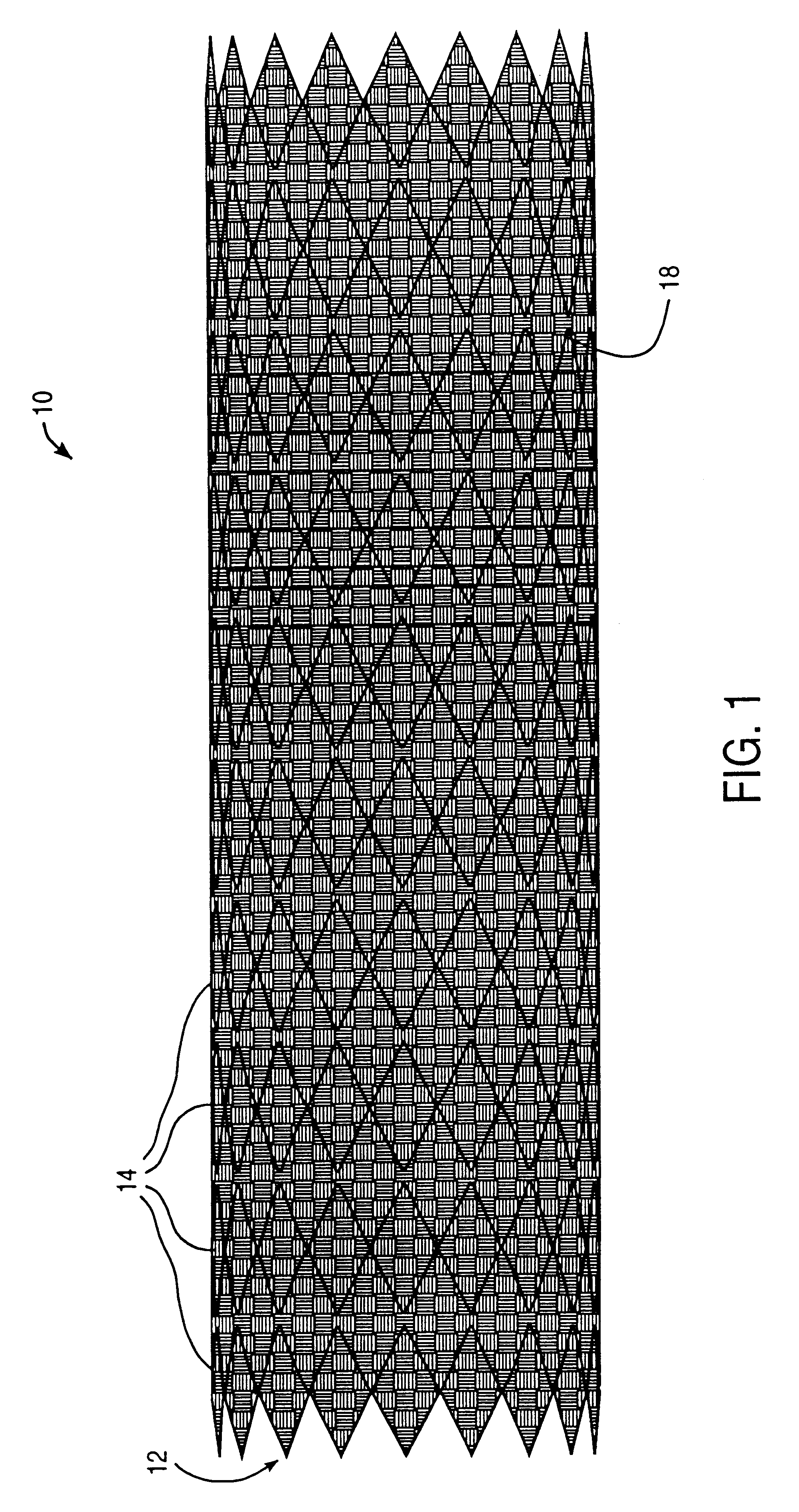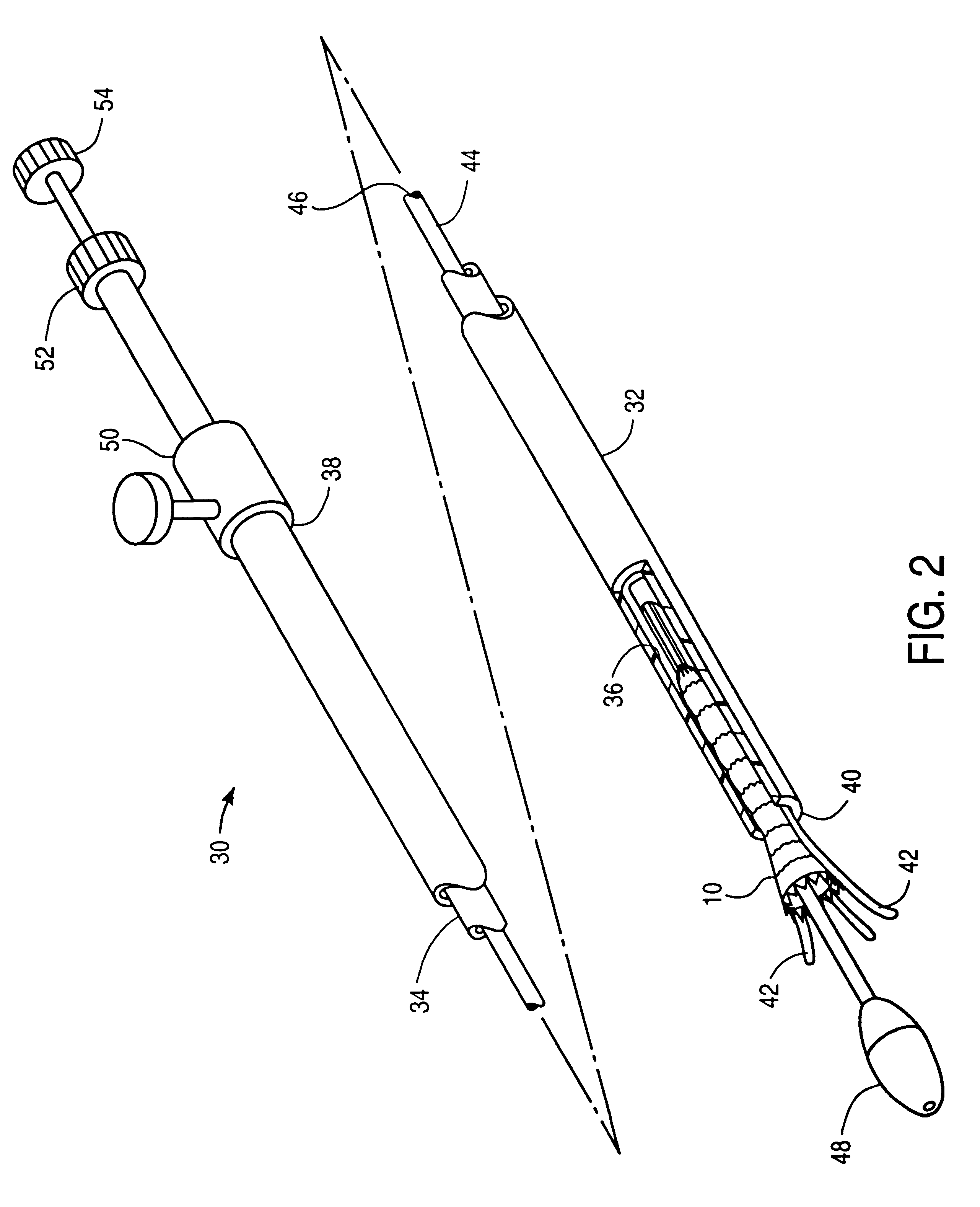Modular intraluminal prosteheses construction and methods
a tubular prosthesis and module technology, applied in the field of endoluminal tubular prosthesis structure, can solve the problem of not allowing hyperplastic ingrowth through the liner and into the prosthetic lumen
- Summary
- Abstract
- Description
- Claims
- Application Information
AI Technical Summary
Benefits of technology
Problems solved by technology
Method used
Image
Examples
Embodiment Construction
The present invention will find its greatest use as an endovascular prostheses for the treatment of diseases of the vasculature, particularly aneurysms, stenoses, and the like. The prostheses will generally be radially expandable from a narrow-diameter configuration to facilitate introduction into the body lumen, typically during surgical cutdown or percutaneous introduction procedures. Exemplary delivery catheters and methods for placement of the prostheses of the present invention are more fully described in copending U.S. patent application Ser. No. 08 / 475,200, the full disclosure of which is incorporated herein by reference.
An exemplary cylindrical graft structure 10 is illustrated in FIG. 1. Prosthesis 10 comprises a perforate tubular frame 12 which includes a plurality of independent (non-connected) ring frames 14. The tubular frame 12 supports an inner liner 18. Optionally, an outer liner is disposed over the ring frames, either instead of inner liner 18, or in combination th...
PUM
 Login to View More
Login to View More Abstract
Description
Claims
Application Information
 Login to View More
Login to View More - R&D
- Intellectual Property
- Life Sciences
- Materials
- Tech Scout
- Unparalleled Data Quality
- Higher Quality Content
- 60% Fewer Hallucinations
Browse by: Latest US Patents, China's latest patents, Technical Efficacy Thesaurus, Application Domain, Technology Topic, Popular Technical Reports.
© 2025 PatSnap. All rights reserved.Legal|Privacy policy|Modern Slavery Act Transparency Statement|Sitemap|About US| Contact US: help@patsnap.com



